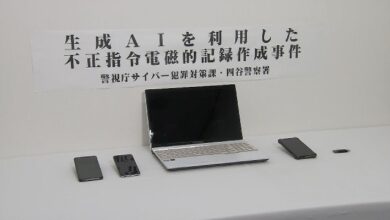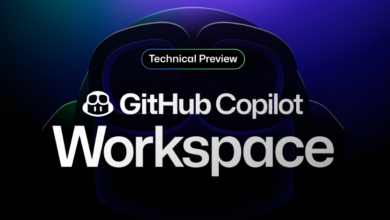Is the power of people skills enough to keep gen AI in check?

There’s also a mentoring and coaching program in place.
“Five years from now, the hiring profile for engineers is going to be radically different,” he says. “We’ll always have some specialty areas where someone is solely focused on technology — but they’ll be specialty areas, not the vast majority of engineers we have on the team.”
Over at TaskUs, a business process outsourcing company, the total tech team is about 700 people, with 200 in development and the rest in support, infrastructure, engineering, networking, and security — and everyone is interested in skilling up on gen AI, says CIO Chandra Venkataramani.
“Whenever I do a town hall with my entire team, the main question I get is, ‘Can I get more training?’” he says.
For technical skills training, TaskUs uses PluralSight, which has been dramatically expanding its AI offerings since gen AI’s emergence. But the company is also about to launch a new training initiative, focusing on management skills and mentoring.
“If a person is, say, a phenomenal coder but not a good leader, we work on upskilling them and making them promotion-ready, so when a position opens up, they can immediately jump to that,” he says.
Yet another new project will provide female employees with mentors and technology leaders from outside the company.
“When it comes to soft skills training, we want to continue to support our staff in this age of generative AI innovation so our people don’t just learn new technology skills, but also new people skills,” he says.
From tech to business
Another non-technical skill tech professionals might want to invest in is business and domain knowledge, says Constellation Research VP and principal analyst Holger Mueller.
“The good developers will always be employed, building things AI can’t build,” he says. “The whole economy is switching to become software-powered, so more software will be built. Qualified coding won’t disappear, but the bar for being a qualified coder will rise, and the jobs will change significantly for everybody.”
For the top coders, the ones saving the company every day, “people will put you on the moon,” Mueller says. “But there’ll be a lot of current developers who have that attitude, and will get a rude awakening.” For those in particular, becoming better at people skills will become very important, and Mueller recommends they focus on the business side.
“Speak the language of business,” he says. “Understanding the business and the real-world impact of your code is getting fundamentally more important.”
The business side has already begun to play a bigger role in corporate technology. It started with the growth of SaaS, says Carm Taglienti, CDO, and data and AI portfolio director at solutions integrator Insight. Business units were able to quickly choose and deploy the tech they needed, with IT stepping in to provide integration, governance, security, and other support functions. The same thing is happening now with AI, as a result of the commoditization of gen AI and the addition of gen AI tools and features to existing enterprise platforms.
“The shift we’re starting to see in organizations is that those who tend to run these AI projects tend to be more business people, instead of technical people,” he says. Instead of data scientists, AI projects increasingly need people who understand the business value and have domain knowledge.
“I don’t think it’s drastic yet, but the technology is taking a back seat,” he adds. “The cloud demonstrated some of this already. Data as a service, software as a service — it started to show we didn’t need all these technical people; we could rely on trusted third parties. You can think of large language models as just another SaaS service, to an extent.”
Business analysts, data analysts, and subject matter experts will merge with technical experts into IT, he says. “You might still have some programmers, but not a lot of them.”
Nick Kramer, VP for applied solutions at SSA & Company, a management consultancy, says he’s already seeing signs of this shift. Previous generations of AI and analytics, big data, or streaming data, were led by technologies.
“The thing setting generative AI apart is the people driving the AI agenda are much more the business leaders than the technical leaders,” he says. In fact, a chief AI officer can come from the business side as often as from the IT side.
And the IT jobs turn into more consultative jobs. “It becomes less about hands-on technical doing and more of an explanatory role and how do we translate the business context to the technical choices in our AI architecture and vendor selection,” he adds.
Keeping realistic expectations
Dayton Children’s Hospital CIO J.D. Whitlock doesn’t expect things to change too much with gen AI. Vendors will add it to their platforms, such as the HR and ERP, and later, once the regulatory requirements are met, to some of the medical systems as well. And there will be vendor-provided training associated with the new features.
“But it’s not like we’re building our own large language models,” he says. “If I was at an academic medical center with a $100 million research budget and a bunch of PhDs running around looking for ways to spend government funding, it might be different. But we’re a smaller health system.”
The organization has about 4,000 employees, several outpatient centers in addition to the main hospital, and serves 300,000 patients a year, and Whitlock’s team only does limited in-house development mostly for administrative efficiency applications.
And he’s not adjusting job descriptions just yet, he says. For a new interface engineer, for example, he’ll want to see interface design skills and the ability to set up integrations with other platforms. For business intelligence jobs, the main skill is SQL. And for developers and other IT staff, gen AI will come via Microsoft Copilot in conjunction with the Microsoft Power Platform, with training provided via the Microsoft partner ecosystem. Plus, there’s another advantage going with a popular platform. “The whole world will be using it,” Whitlock says. “You can go to YouTube and watch the videos.”
And people skills?
“We’ve always had to have good people skills,” he says. “We work with our business leadership to effectively meet their IT needs, and now you sprinkle generative AI on that. In a sense it’s transformative, but it’s just another new technology you have to figure out how to implement thoughtfully in order to gain efficiencies.”



